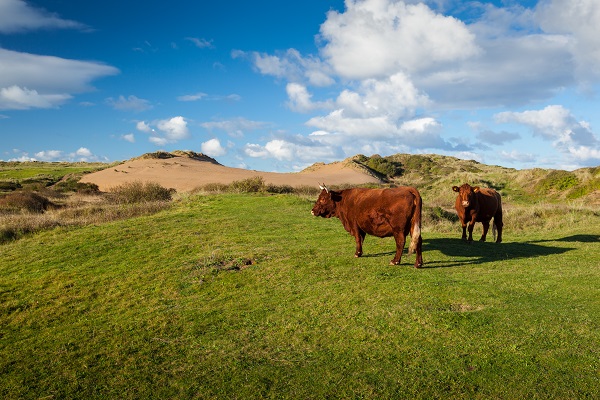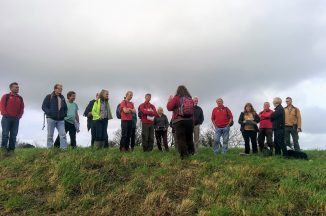Objective:To promote farming, food production and land management practices that conserve and enhance the special qualities of the AONB

The North Devon Coast AONB is a farmed landscape reflecting centuries of land management traditions and change. More recent changes have been heavily influenced by the European Common Agricultural Policy and its different strands of support to improve productivity, maintain a stable and affordable supply of food and good stewardship of the land (for wildlife, heritage and ecosystem services). Farming is not just about food production, it is also about the supply and management of natural resources and a viable rural economy and community.
Over 80% of the AONB is agricultural, three quarters of which is managed by owner occupiers. Significant landowners within the AONB include the National Trust, Stucley Estate (Hartland), Christie Estate (Braunton) and Clovelly Estate. With over 180 commercial holdings and an estimated 100 smallholdings, the majority are engaged in livestock farming including 10% in dairying with only a handful specialising in poultry, pigs, forestry or horticulture. However, slight changes in crops and livestock can be seen with a doubling of land under horticulture, a 30% increase in poultry, a slight decline in beef cattle but static dairy and sheep numbers over the last five years. These ‘trends’ may not continue given the changing context for agricultural and environmental policy in 2018/19.
Several organisations give advice to farmers and landowners, usually linked to environmental stewardship schemes or specific landscape or biodiversity projects. This includes Natural England, the Environment Agency, the Forestry Commission and charities such as Devon Wildlife Trust and the National Trust amongst others often working in partnership.
State of the AONB 2014 – 2018 – Farming and Land Management indicators
NEW for July 2021 – March 2024 the Farming in Protected Landscapes Programme – a programme of funding for one-off projects




